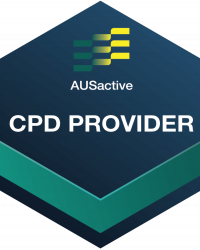Reformer Repertoire
Side Kick Series:
Single Side Kick
Alternate Names
Side Kick, Front/Back
Derived From
Mat Pilates: Side Kick Series
Primary Element
Stability
Why for Primary?
To create, develop and connect with the pelvis stabilisation muscles such as gluteus medius and minimus and the deep core transversus abdominis to create pelvis stability and practice hip disassociation.
Secondary Element
Strength
Why for Secondary?
To develop and improve gluteal and leg muscle strength, particularly in the gluteals and hamstrings of the working leg when going back into hip extension.
Tertiary Element
Mobility
Why Tertiary?
The hip and ankle joints are all working here, although not always through their full range of motion.
Repetitions
8-10 each direction, each side
Apparatus Setup
Suggested springs
- Number system: 0.5 spring
- Colour system: 1 x blue spring
- Resistance: light
Foot Bar one position down from vertical, or on many Reformers the top angled position.
Use a ball or cushion under the client’s head for neck support, and use a small hand towel or foam under the client’s underside waist to aim for a neutral position even if lying on their side.
Plane of Motion
Sagittal
Targeted Muscles
To create, develop and connect with the pelvis stabilisation muscles the focus is gluteus medius and gluteus minimus and the deep abdominal muscles transversus abdominis.
Hip extensors – muscles which open or lengthen the front of the hip and move the leg backwards. Primary hip extensors include
- Gluteus maximus
- Posterior head of the adductor magnus
- Hamstrings
Warnings
This exercise may be difficult for clients with tight hip flexor muscles, as it may be uncomfortable to sweep the leg forward into deep hip flexion. Try to not bring the leg too far forward and keep the leg up at hip height or higher. Watch for arching of the back when the leg extends backwards, the movement needs to come from the gluteals with the leg moving back whilst keeping the pelvis and torso still.
It may also be unsuitable for clients with some hip, knee or ankle issues, or who are unable to move in a pain free range of motion.
Execution
Lie on one side on the Reformer leaning on the forearm of the lower arm with the hands behind the shoulder rests. Place the foot of the top leg into the front strap, bending the bottom leg. Engage the underside oblique abdominal muscles and shoulder stabilisers to support the torso. Lift the top leg up to hip height and straighten the leg, engaging the hip abductors.
Double exhale to swing the leg as far forward as possible dorsi flexing the foot and pulsing twice when reaching the end range. Inhale swing the leg back as far as possible plantar flexing the foot and elongating the leg, whilst keeping the pelvis still.
Observations
Do a body scan of the client taking note of the following points
- Pelvis
- Are the hip bones even vertically or is the client leaning their top hip bone back?
- Is the client arching their back to achieve the hip extension movement, or are they able to stay within a range of motion pressing back that enables the pelvis to stay still?
- Is the client neutral with their pelvis, with a gap underneath the underside waist?
- Legs
- Is the top leg knee locked? You’re looking for a soft and straight knee, not dropping inwards and not locked. Have the client reach the knee up slightly to connect more into gluteal stability muscles
- Is the client able to keep the top leg at hip height or higher? Keep the leg lifted to avoid engaging the hip adductor muscles
- Feet
- Are the insides of the foot lifting or leaning outward? (supinated)
- Are the insides of the foot rolling inward? (pronated)
- Apparatus
- Is there tension on the springs the whole time? Or is the carriage crashing to the stopper or ‘park’ indicating a lack of control and a push by the client beyond their ideal range of motion? If the carriage is crashing encourage the client to reduce their range of motion and slow their movement down to focus on controlling the return phase, or reduce the spring load so the client can control the spring.
Learning Style Technique Cues
Auditory – word associations that connect mind and body
- Aim to keep the hip, knee and foot of the top leg on the same horizontal line or in line with the Foot Bar
- Try to minimise rocking the torso back and forwards
- Say the client’s name when you’re about to interact with them
Visual
- Imagine the swinging motion of a pendulum, flipped to the side
- You may demonstrate a part of the movement as a visual representation for the client to see
Kinaesthetic
- Keep the rib cage connected and avoid thrusting the rib cage forward as the leg moves back
- Bias most weight into the strap and reach the leg out into the strap
Modifications and Variations
Regress the exercise by
- Reducing repetitions and/or pace
- Reducing the range of motion so the client can focus on pelvis stability without the hip flexors taking over. Create more of a pulse movement from the extended leg position halfway into the stopper to avoid going into deep hip flexion on the return phase
- Working on Side Kick Series: Bend & Press
Progress the exercise by
- Increasing the spring settings to one red spring
- Adding variations such as pulses, external or internal rotation
- Progress towards
Series and Transitions
This exercise is part of the Side Kick series which includes a range of other exercises in the fundamental and progressive repertoire. The Side Kick series can also be found in the Mat and Cadillac repertoire.
Transition to the third Side Kick exercise by keeping the top leg lifted and straight towards the Foot Bar ready for Side Kick Series: Rectangles.

